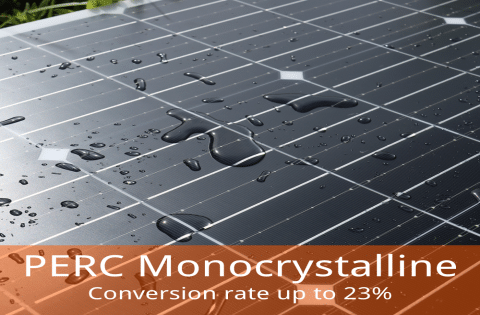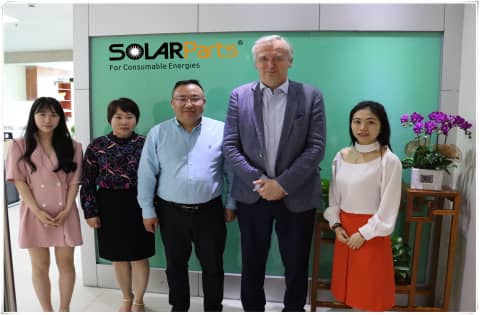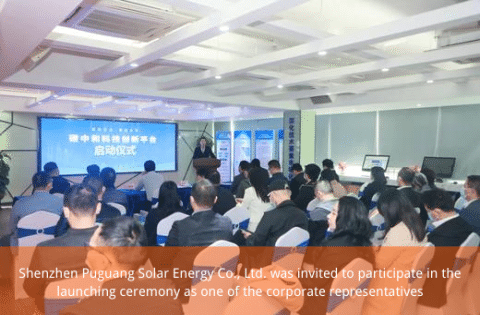Solar cell technology is constantly evolving and improving. Many customers do not know the difference between PERC solar cells and Standard solar cells. Let's learn about PERC solar cells.
What does PERC mean?
Literally, it can stand for Passivated Emitter and Rear Cell or Passivated Emitter and Rear Contact.
What is PERC?
Essentially, PERC cell technology defines a solar cell architecture. It is an exciting technology because they offer higher efficiencies than standard solar cells. That means solar panels built with PERC cells can more easily convert sunlight into usable electricity.
Advantages of PERC solar cells:
PERC solar cells are a more efficient type of solar cell. The advantages of PERC technology are also reflected in its compatibility with other high-efficiency cell and module technologies, and the potential for continued improvements in efficiency and power generation capacity. By stacking with technologies such as multi-busbar, selective emitter, and Topcon, the efficiency of PERC cells can be further improved. The combination of diamond wire cutting and black silicon technology can improve the cost performance of polycrystalline cells. On the other hand, bifacial PERC cells can achieve bifacial power generation with almost no increase in cost and achieve a power generation gain of 10%-25% at the system side, which greatly enhances the competitiveness and future development potential of PERC technology.
What are PERC solar cells different from Standard solar cells?
PERC solar cells are structurally not much different from typical photovoltaic solar cells. Both types of solar technology use silicon wafers to generate a flow of electrons from incoming solar radiation, and the overall structure of the cell types is very similar. PERC technology improves conversion efficiency by adding a dielectric passivation layer on the backside of the cell. Better efficiency levels in standard cell structures are limited by the tendency of photogenerated electrons to recombine. PERC cells maximize the potential gradient across the P-N junction, which allows for more stable electron flow, reduced electron recombination, and higher efficiency levels.
The structure of a Standard solar cell from top to rear:
– screen printed silver paste to form the contacts
– Anti Reflective Coating
– phosphorous diffused, boron-doped silicon wafers that form the P-N junction
– aluminum Back Surface Field (Al-BSF)
– screen printed aluminum paste
The structure of a PERC solar cell from front to rear:
– Screen-printed Silver paste front contact
– Anti-Reflective Coating (ARC)
– Silicon wafers that form the P-N junction
– Local Aluminum Back Surface Field (Al-BSF)
– Dielectric passivation layer
– SiNx Capping Layer
– Screen-printed Aluminum paste layer
In summary, the main difference between a PERC cell and a typical monocrystalline photovoltaic cell is the integration of the back surface passivation layer, which is a layer of material on the backside of the cell.
So, how does a back surface passivation layer improve solar cell efficiency?
- Light is reflected back through the cell
The back surface passivation layer reflects light that passes through the silicon cell without being absorbed back into the silicon, thus providing the solar cell with a second attempt at absorption. This reflection of light means that more incident solar radiation ends up being absorbed by the silicon cell, so the cell becomes more efficient.
- Reduce electron recombination
The addition of a back surface passivation layer reduces "electron recombination" in solar cells. In short, electron recombination is the tendency of electrons to recombine, which causes the free movement of electrons through the solar cell to be hindered. This suppression of free electron motion results in suboptimal cell efficiency. In PERC solar cells, electron recombination is reduced to improve efficiency.
- Reduced heat absorption
The third benefit of PERC solar cells is the reflection of certain wavelengths of light. The silicon wafers in solar cells can only absorb light with wavelengths up to 1180 nanometers (nm), while higher wavelengths of light travel through the silicon and are absorbed by the metal back sheet of the solar panel, generating heat. When solar cells are heated, they operate at a lower efficiency. The back surface passivation layer of PERC solar cells is specifically designed to reflect light at wavelengths above 1180 nm, thereby reducing thermal energy in the solar cell, thereby increasing efficiency.
Benefits of PERC Technology for Solar Shoppers
Solar panels built with PERC technology enable higher energy density solar installations. This means you can generate the same amount of energy with fewer PERC solar panels than with more standard solar panels. Consequently, by reducing the number of solar panels required for installation, costs can be reduced. Additionally, the fewer panels you need, the more flexibility you have in placing panels on your roof. If suitable roof space is limited, using PERC solar panels or any high-efficiency panel product can enable a solar installation to provide the power you need.



